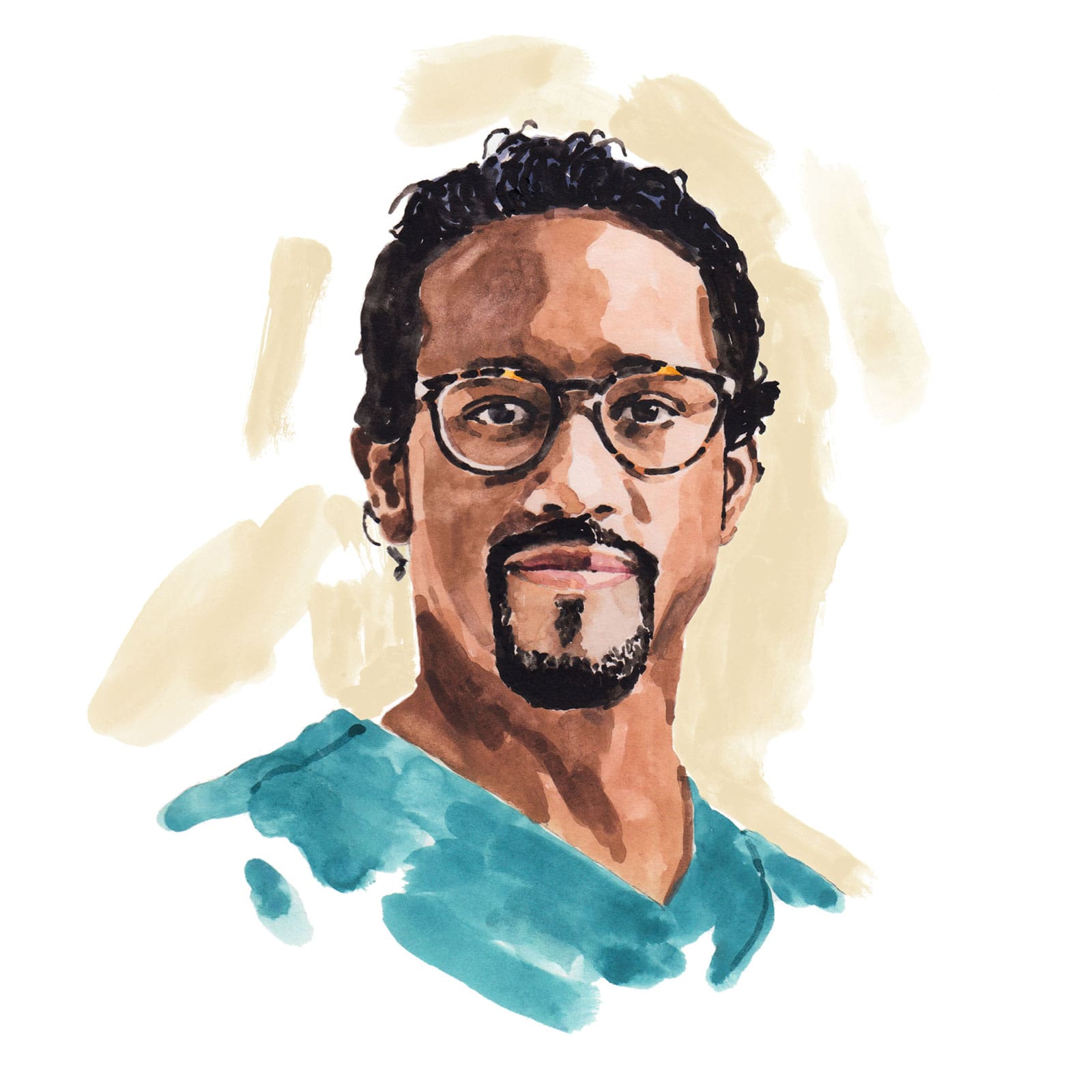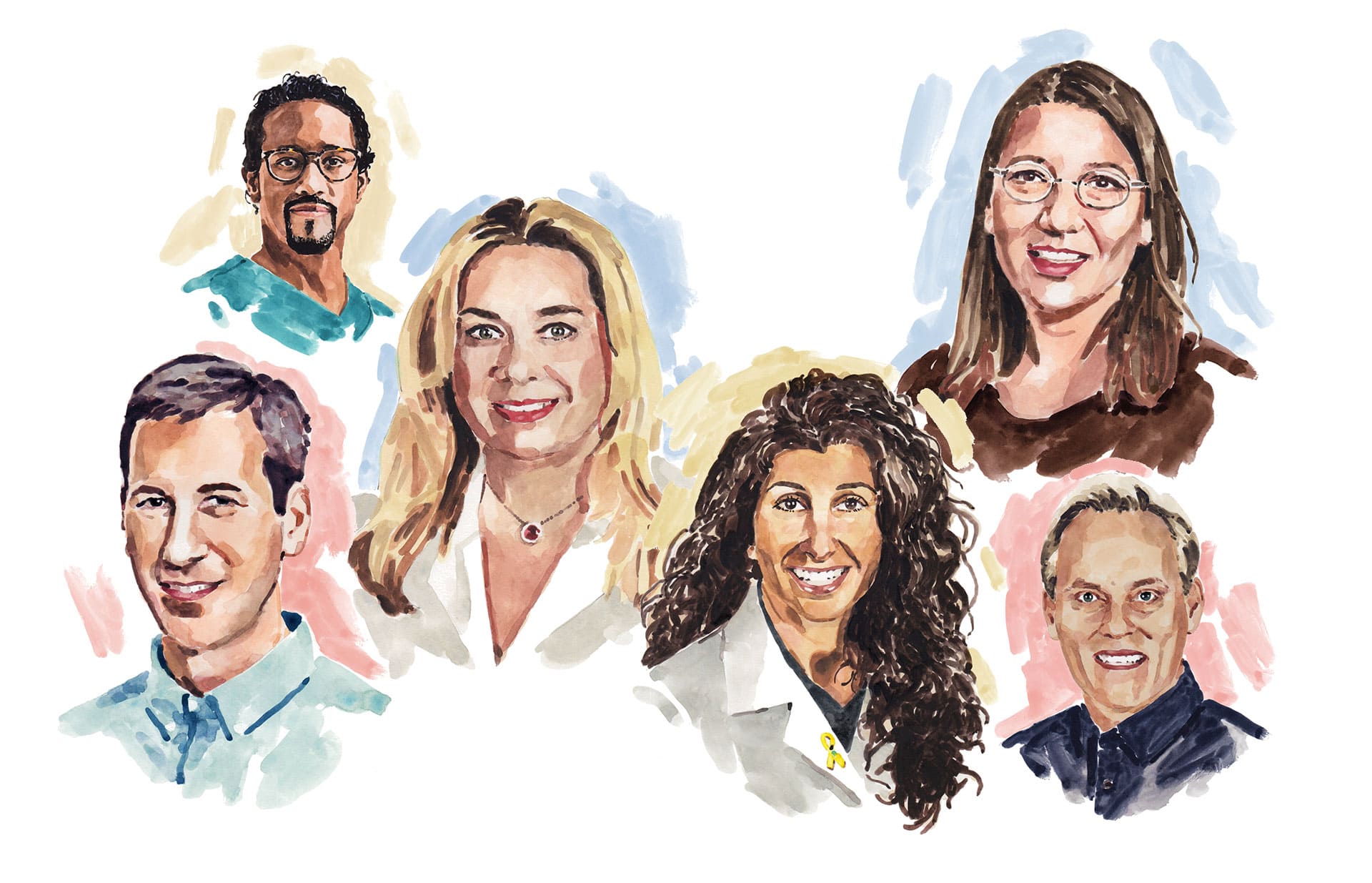Voices
Insights from Sylvester Comprehensive Cancer Center’s Outstanding
Faculty Award Winners for 2022
By Josh Baxt
Illustrations by Sam Kerr
Faculty Award Winners for 2022
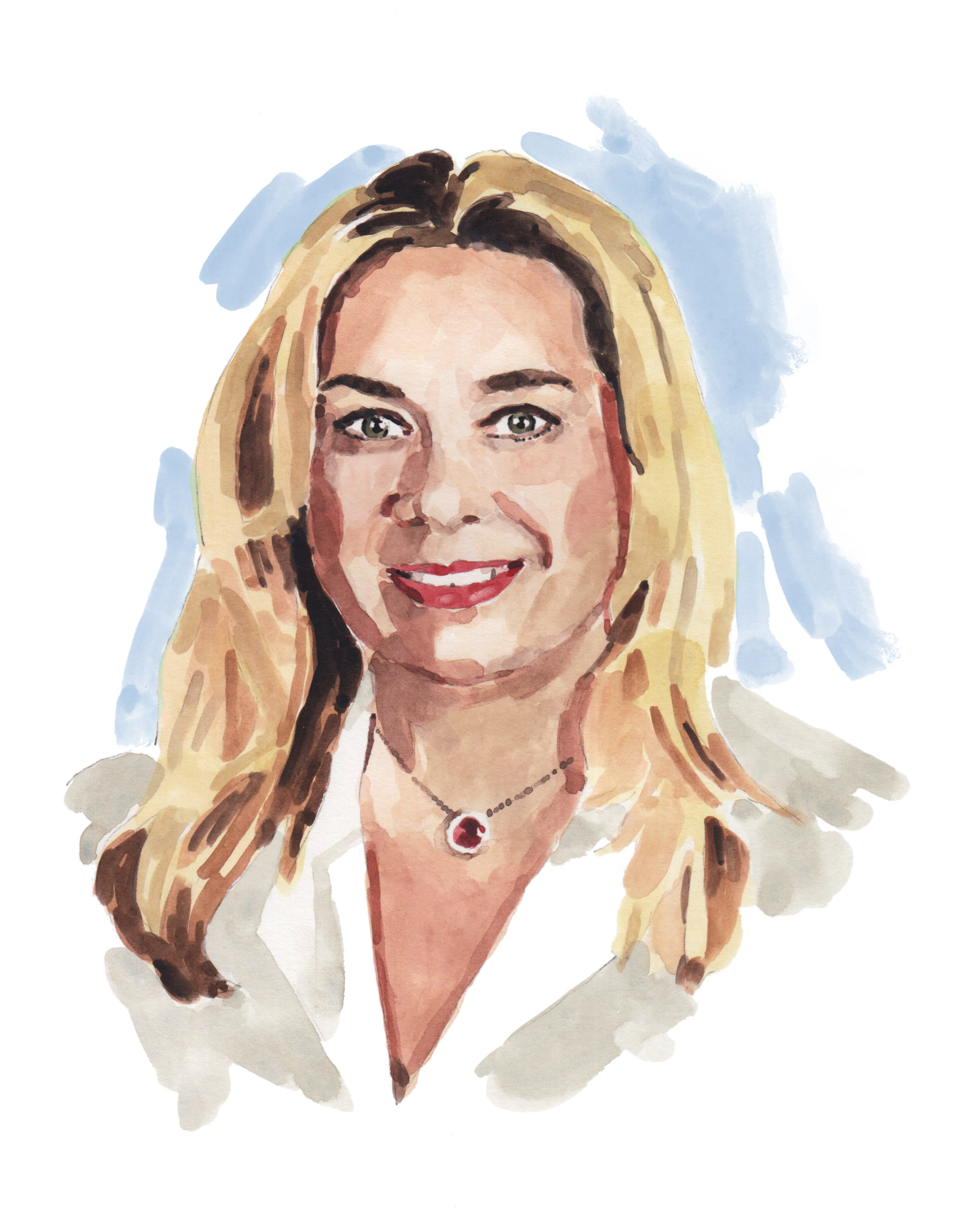
Smoke Signals
Taghrid Asfar, M.D., M.S.P.H., associate professor of public health sciences, is the Outstanding Population Science Researcher of the Year. An internationally known expert on reducing tobacco use and related deaths, Dr. Asfar is deeply committed to improving smoking cessation treatments in disadvantaged and high-risk populations. She is the principal investigator in several efforts to advance health communications strategies to limit tobacco use among children and young adults.
In 2002, I began working at the Syrian Center for Tobacco Studies, which is funded by the National Institutes of Health. Smoking in Syria was a big public health problem — almost 57% of men and 20% of women smoked — but tobacco treatment was not available. I saw the great need to improve tobacco prevention and treatment and never stopped doing it.
More recently, I have been working to develop warning labels for electronic cigarettes. We need to figure out how best to communicate the risks, including toxicology, addiction, respiratory diseases and other issues. If younger generations begin using electronic cigarettes, decades of tobacco control progress could be jeopardized.
More than 16 million adults in the United States have a disease caused by smoking cigarettes, and smoking-related illnesses lead to half a million deaths each year. In addition, the dramatic increase in youth e-cigarettes use is a major public health problem.
I think our big success in reducing cigarette smoking — from 50% in 1964 to 17% in 2021 — came from improving access to treatment, eliminating exposure to secondhand smoke, and tobacco counter-marketing campaigns. We need to keep pursuing these strategies.
Paying It Forward
Gina D’Amato, M.D. ’98, associate professor of medicine, is the Outstanding Mentor of the Year, Trainees. Dr. D’Amato co-directs the Oncology Pathway at the Miller School and advises the Nurse Practitioner Oncology Fellowship Program. She is passionate about educating medical students, residents and fellows. Because she has had several mentors, including Sylvester sarcoma program leader Dr. Jonathan Trent, Dr. D’Amato has set a mission to pay it forward.
I was originally going to work with lymphoma patients because my sister had lymphoma in high school. Fortunately, 30 years later, she’s doing great. However, one of my mentors left the institution and I didn’t have a project. There was a need in the sarcoma program, so I helped fill it.
Sarcoma affects children, young adults, older adults, pretty much all demographics. The average age at diagnosis is only 55, versus around 65 for other cancers, and there are more than 170 different sarcomas. Every patient is different, so we can’t put them in a box with some nice algorithm.
It has been very rewarding for me to watch our mentees excel. We’ve given presentations to the Connective Tissue Oncology Society and the American Society of Clinical Oncology. They’re getting great fellowships and residencies at places like Yale, Johns Hopkins and, of course, UM. I’m really proud of them.
I just want them to be good doctors. I always tell them: If you love your patients, they will know it, and you’re going to do the best job possible. You’re going to work hard, make the best treatment decisions and provide excellent follow-up care. You’re going to help them live longer.
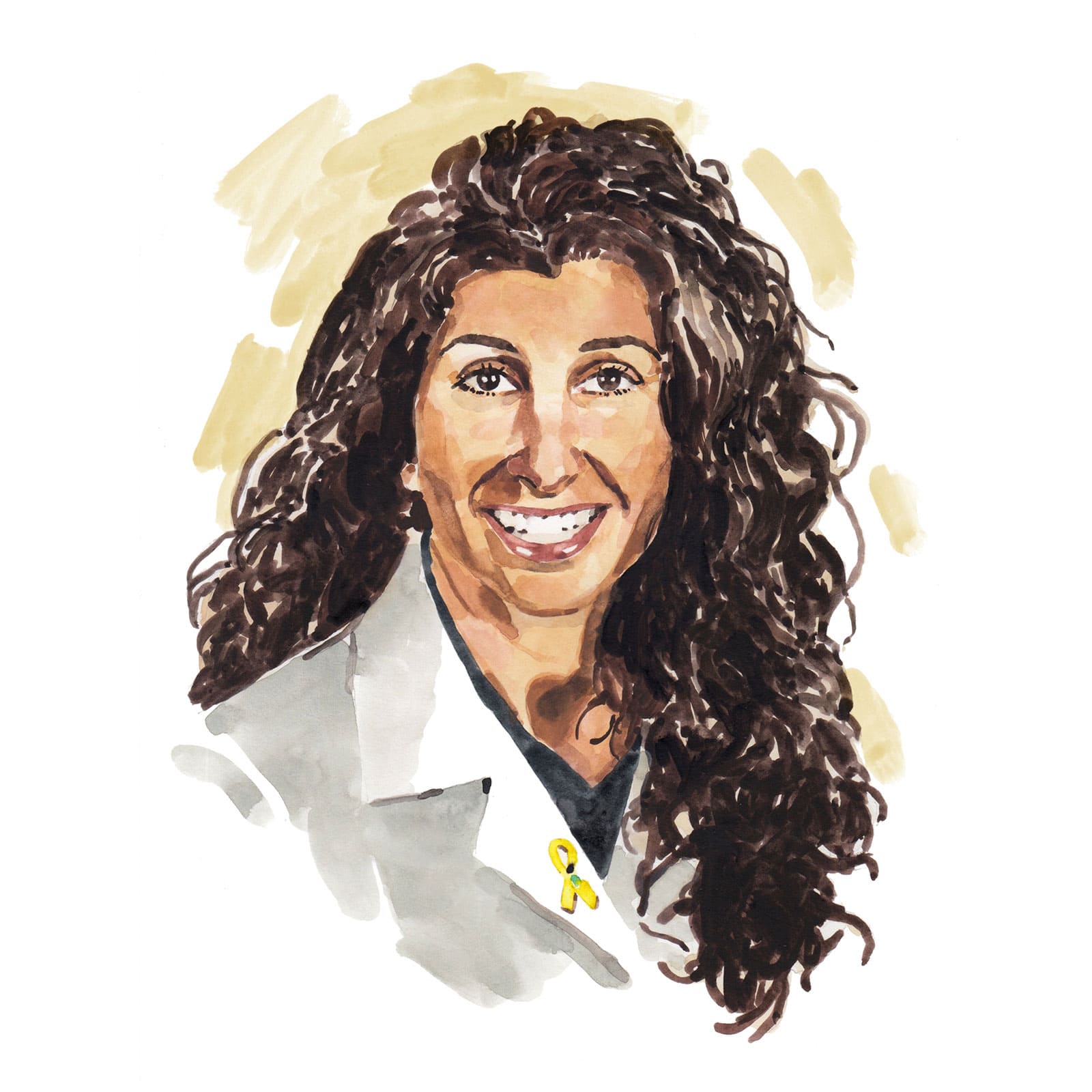

Keeping Patients Disease Free
C. Ola Landgren, M.D., Ph.D., professor of medicine, is Outstanding Clinical Researcher of the Year. Dr. Landgren has led a series of studies to define biological mechanisms that transform myeloma precursor disease into full-blown multiple myeloma. He and his team have also developed strategies to define minimal residual disease detection after therapy in multiple myeloma. Dr. Landgren has a strong track record in drug development and has served as a principal investigator for many clinical trials.
This year, we developed a four-drug combination [daratumumab, carfilzomib, lenalidomide and dexamethasone] and showed that in newly diagnosed multiple myeloma patients we could achieve 71% minimal residual disease (MRD) without doing a bone marrow transplant.
This work is being expanded and validated in a new trial, which is ongoing at UM and across the U.S. We are also looking at the interactions between myeloma cells and host immune systems, as well as the mechanisms that help these cancers resist treatment. In addition, we are pursuing new ways to track MRD — in bone marrow and peripheral blood — to ensure patients remain disease free.
When I started treating patients with multiple myeloma, the average survival was one or two years. Today, a newly diagnosed multiple myeloma patient with no other major health issues can survive for 10 to 20 years or longer. In the next couple of years, several new drugs should receive FDA approval, and they will likely add another 10 years of overall survival. The new drugs offer low toxicity and high efficacy.
The future is amazing for myeloma patients, though we still need to develop a cure. We are working on that in the lab and in collaboration with our clinical/translational team.
Sign of Aging
Maria “Ken” Figueroa, M.D., associate professor of biochemistry and molecular biology, is the Outstanding Basic Scientist of the Year. Dr. Figueroa investigates how epigenetics drives blood cancers. Her lab uses computational approaches to understand the consequences of epigenetic modifications. In addition, they are developing molecular biomarkers that may predict therapeutic responses and clinical outcomes.
In our cells, the genome is like computer hardware while the epigenome is like software. Heart cells are different from neurons the way Excel is different from Photoshop. The computer is the same, but the software changes its function.
I study the hematopoietic system, or how blood cells get formed. In blood cancers such as leukemia, cancer hijacks the normal software just like malware hijacks the software in a computer.
We’ve done a lot of work on myelodysplastic syndrome (MDS), a pre-leukemic condition, and found that about 5% to 10% of MDS cases don’t have any genetic explanations. But we recently found they do have distinct epigenetic changes, and now we can classify them based solely on this epigenetic information. This is important because these cancers behave differently than ones with genetic mutations. Patients with these epigenetic modifications respond better to therapy, while those with mutations don’t always respond.
We’ve also shown that certain genes become deregulated with aging, and that changes how those cells behave. Some of those age-related epigenetic changes may contribute to a variety of health issues, including cancer and immune system declines.
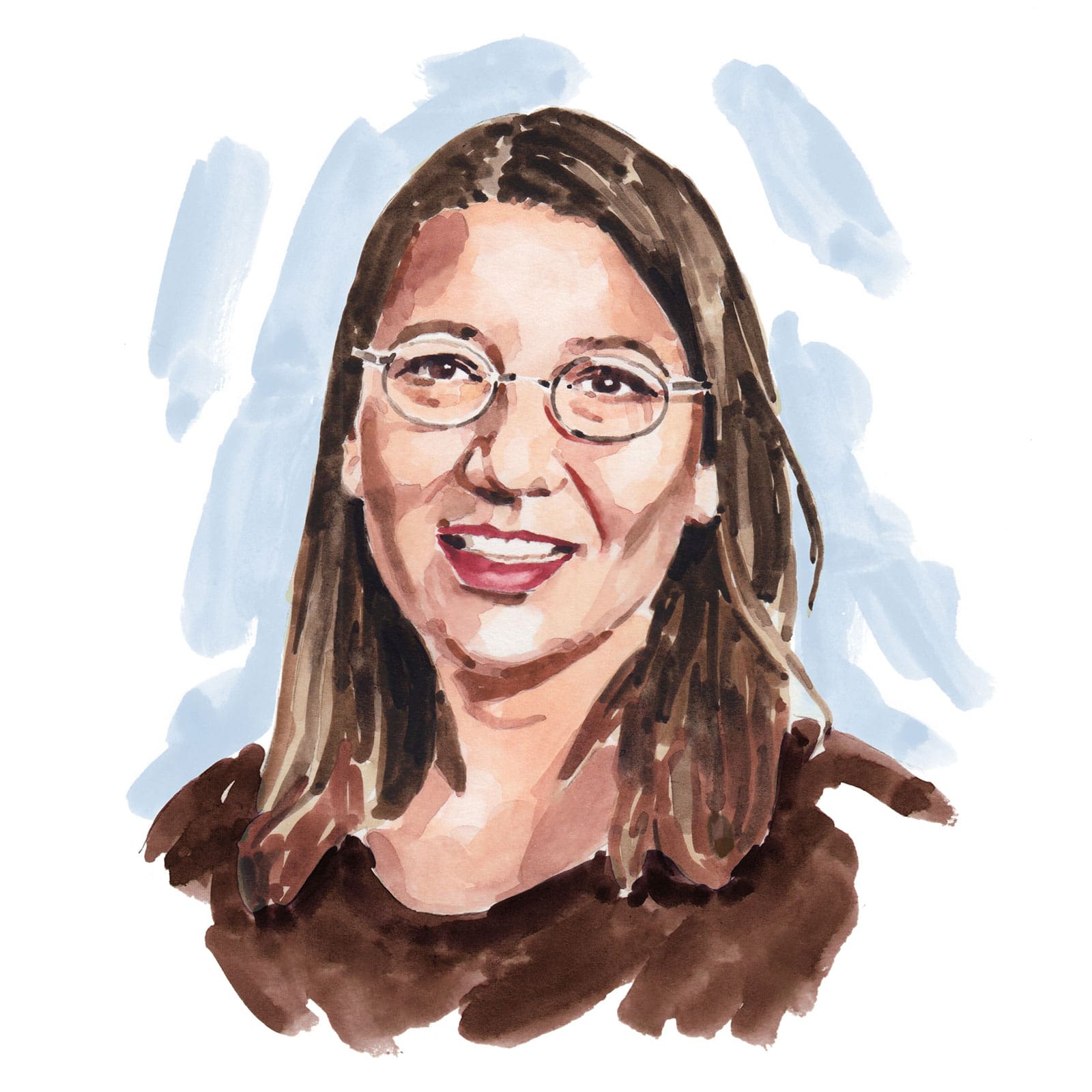
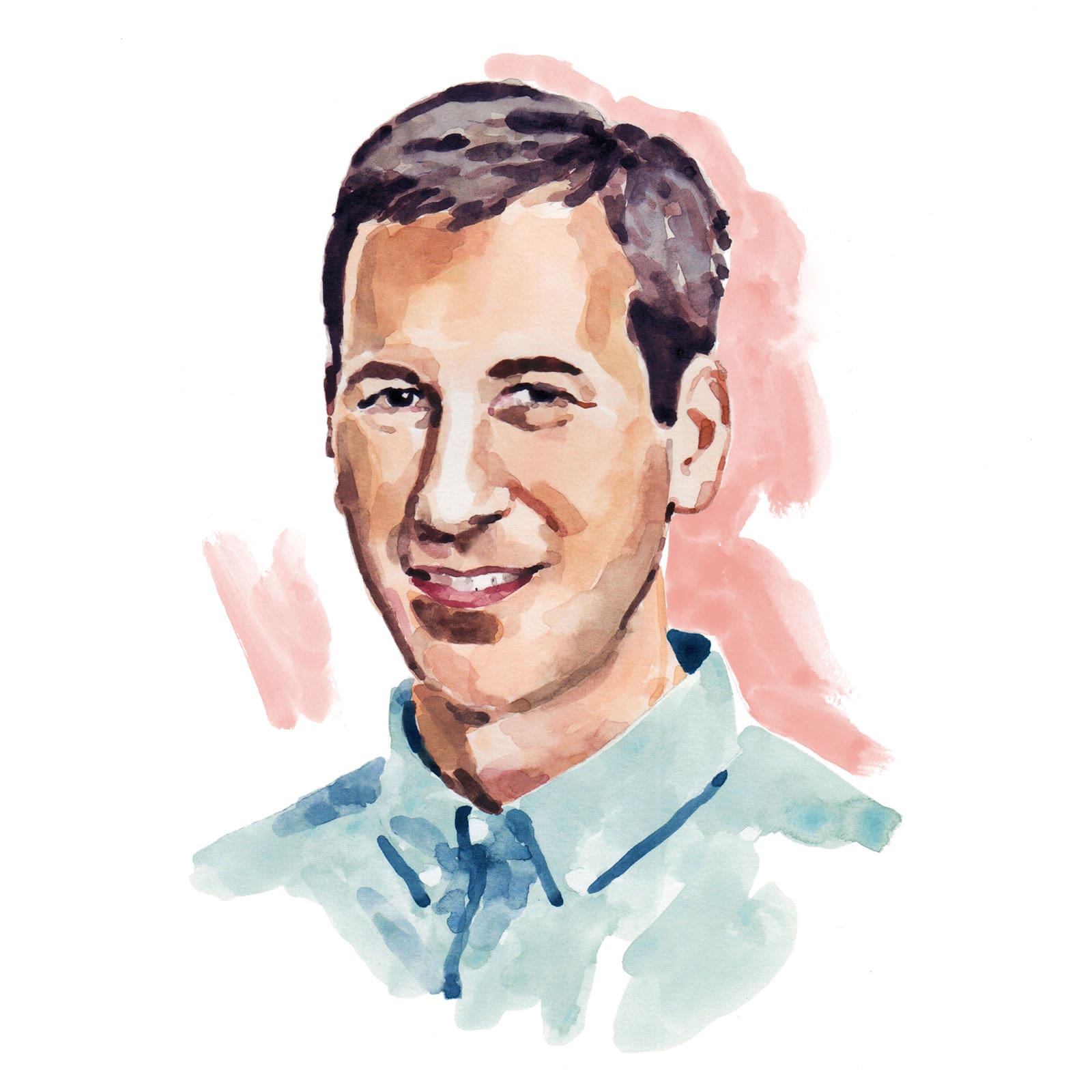
Rebuilding the Machine
Scott M. Welford, Ph.D., professor of radiation oncology, is Outstanding Mentor of the Year, Junior Faculty. Dr. Welford leads Sylvester’s Faculty Development Program for basic science junior faculty. His research focuses on understanding tumor development and therapeutic resistance. He is looking for ways to sensitize tumors so they will better respond to treatment. Dr. Welford cherishes his teaching and mentoring, and he hopes to pass on the key lessons he learned from his own outstanding mentors.
My mentors played an essential role in my career, each giving me different tools for success, and they have stayed with me and continue to inform my choices. As an undergraduate at UCLA, my mentor was Dr. Christopher Denny, an in-the-weeds scientist who taught me not to fear taking the machine apart to get it working again.
Dr. Amato Giaccia [at Stanford Medicine] was a big-picture guy. He taught me to strive to be the big fish and how to apply narrow scientific concepts to broad problems. Beginning my faculty career, my mentors were Drs. Nancy Oleinick, Stan Gerson and Ruth Keri, all at Case Western, who taught me how to write grants and convey scientific impact, as well as how, where and when to commit my efforts.
I share many lessons I learned from years of being a mentee, such as writing and evaluating grants and papers and career development. In recent years, there has been increased focus on mental health and well-being to avoid burnout. Strategies to manage healthy life goals are important to discuss and pursue.
The most rewarding experience with mentees is to see them thrive, gain confidence and eventually realize their own successes. In the past year, I have had a graduate student publish in a top-tier journal, a junior faculty mentee get their first grant, and a former student, now a postdoc at a top laboratory, be recognized with an award from an international society.
Hands-on Learning
Chad R. Ritch, M.D., M.B.A., associate professor of urology, is Outstanding Teacher of the Year. Dr. Ritch developed the robotic surgery curriculum for the urology residency program and runs hands-on training sessions with urology residents to teach them robotic surgery fundamentals. He has twice received the Dr. Charles Lynne Residency Teaching Award, which honors urology faculty for teaching excellence. Dr. Ritch also teaches urologic oncology fellows and is a member of the Society of Urologic Oncology Fellowship Committee, which oversees urologic oncology fellowship standards and accreditations throughout the U.S.
I try to recognize that everyone has a different starting point when it comes to effective learning. I don’t assume the concepts being taught are easily grasped by students and residents, so I deconstruct the info to make it easy to understand.
I always have residents watch me do the operative step. Then I have them try it while describing what they are doing and the challenges they are facing. That way, I can help them overcome the technical challenges and progress through the operation.
The first step is mastering the instrument, so I have them learn on a robotic surgery simulator before ever touching a patient. Once they demonstrate mastery on the simulator, I progress them through each step of the operation, from the easiest to the technically challenging. In order to move through each part they have to demonstrate proficiency on the robot. I encourage them to record and watch videos of the parts that I do and compare it to videos of themselves to see where they might improve.
In 2020, I developed a novel technique for robotic inguinal lymph node dissections and taught it to our fellows. One of them, Dr. Indraneel Banerjee, created a teaching video and submitted it to the North American Robotic Urologic Surgery conference, and he was awarded best video. That was a great moment.
I was very humbled to receive this award and am truly appreciative of my students, residents and fellows. I have had the benefit of some amazing attendings throughout my training who were fantastic teachers, and it is a privilege to be viewed on their level.
